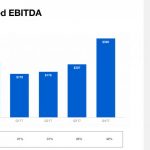 Image Source: PexelsYou’ll be hearing a lot about “T+1” in the next two months.Your broker probably already told you about it. (But you might not have paid it any attention.) Don’t worry, the change won’t affect many of us, but it’s still worth taking note if you’re a trader.T+1 refers to the settlement of securities transactions one business day after the trade date. The “T” represents the transaction date — and the “1” signifies the next business day.Settlement is the actual transfer of securities and funds that takes place after you trade.Let’s say you buy 100 shares of the SPDR S&P 500 ETF (SPY). The day after the trade, your broker will place the shares in your account. They’ll also take the cash for the purchase from your account at that time.For now, settlement takes two days. But beginning on May 28, 2024, settlement will take one business day. However, it wasn’t always this fast…
Image Source: PexelsYou’ll be hearing a lot about “T+1” in the next two months.Your broker probably already told you about it. (But you might not have paid it any attention.) Don’t worry, the change won’t affect many of us, but it’s still worth taking note if you’re a trader.T+1 refers to the settlement of securities transactions one business day after the trade date. The “T” represents the transaction date — and the “1” signifies the next business day.Settlement is the actual transfer of securities and funds that takes place after you trade.Let’s say you buy 100 shares of the SPDR S&P 500 ETF (SPY). The day after the trade, your broker will place the shares in your account. They’ll also take the cash for the purchase from your account at that time.For now, settlement takes two days. But beginning on May 28, 2024, settlement will take one business day. However, it wasn’t always this fast…
HOW SETTLEMENT CHANGED OVER THE YEARS
Exchanges have been shortening the settlement time since 1993.Interestingly, the New York Stock Exchange (NYSE) started at T+1. Meanwhile, the old American Exchange needed more time, so it settled trades on T+2.In 1953, as volume expanded, both exchanges shifted to T+3. After all, it took time to find the stock certificates and move them from one broker’s vault to another. With more volume, they needed more time to move all that paper around Wall Street.More volume led to T+4 in 1962. By 1968, brokers needed even more time, and T+5 became the rule. It’s taken 31 years for us to get back to where the NYSE was in the 1920s.But all of this is quite unnecessary now because we finally have technology that allows for instant settlement.In fact, we know that technology exists because of bitcoin (BTC). In that market, transactions are often settled in less than 10 minutes.Bitcoin isn’t a share of stock. But the technology behind bitcoin could make stock settlement quicker.
A TECH THAT COULD IMPROVE STOCK MARKET TRANSACTIONS
Blockchain is the underlying technology that powers bitcoin and other cryptocurrencies — while bitcoin is a specific application of this blockchain technology.Bitcoin was specifically designed for peer-to-peer digital transactions as the medium of exchange.As the underlying technology, blockchain enables the secure and transparent recording of transactions across a decentralized network of computers. In simplest terms, you could think of it as the “spreadsheet” that keeps track of who owns which bitcoin.More specifically, each block in the blockchain contains a list of transactions, and these blocks are linked together in a chronological order, forming a chain.The most important thing for us to know is that this blockchain technology has applications beyond just crypto…This includes supply chain management, voting systems, smart contracts and other transactions.Now, if market regulators could force the issue, blockchains could be used to efficiently track ownership of shares of stocks.Unfortunately, it’s unlikely that regulators will make this change. Many Wall Street firms profit from doing the business the old way. So they have no incentive to change anything when they make so much money doing things the old way.Many investors fall into that same trap. They stick to the same old approaches. And they miss out on new markets (and some life-changing returns) because they don’t learn about and invest in new tech.Fortunately, we don’t need to be experts on new technologies to benefit from them as investors. We just need to know experts who understand the emerging breakthroughs and uncover trends developing in their early stages.More By This Author:Bitcoin’s Halving Is An Issue Of Supply & Demand Battery Energy Storage Market Projected To Grow 6x By 2030 SpaceX Internet — Your Stocks For Mission: Mars














Leave A Comment